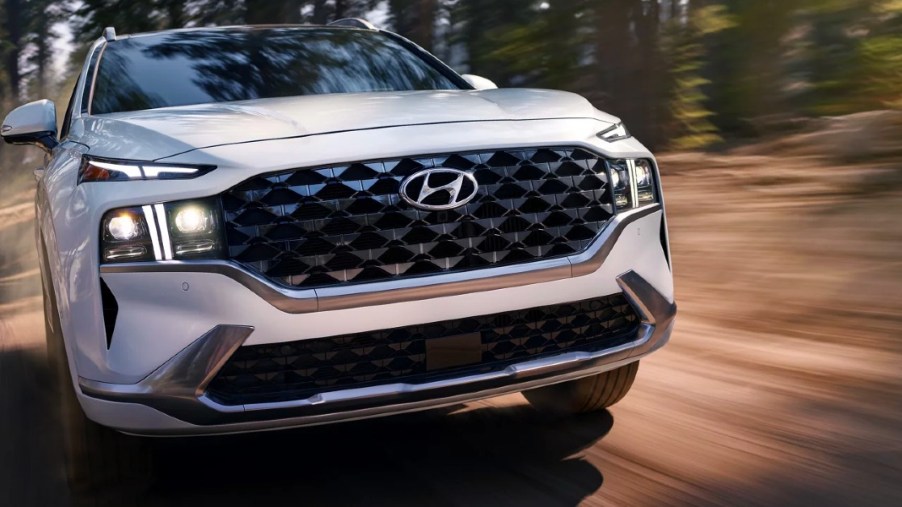
The Biggest ‘Winner’ and ‘Loser’ so Far This Year for Hyundai
Hyundai usually has no problem getting drivers to buy its vehicles, but 2023 has been an exceptionally good year for this automaker. Some of its best sellers have only gotten more popular this year, so it’s hard to imagine that there’s a “bad” Hyundai car. Looking at the current numbers, Hyundai has some very obvious winners and losers.
Here’s everything Hyundai has accomplished for 2023
With 461,141 cars sold in total, this automaker’s popularity has increased by 14% compared to 2022. The Hyundai Tucson PHEV’s year-to-date sales are up by 44%, while the Santa Fe Hybrid’s sales increased by over 200%. The Hyundai Ioniq 5 and Santa Cruz were also both highlighted for their record-breaking sales totals.
The Hyundai Elantra is a surefire winner
While we’re happy about the Hyundai Tucson’s success, we’re also not surprised. The Tucson enjoys positive sales gains year after year, frequently moving well over 100,000 units. It’s even more impressive when a car exceeds its YTD sales by a significant margin. That’s why we’d like to nominate a different car to be Hyundai’s MVP of 2023.
The Elantra showcases the biggest YTD improvement over any other gas-powered Hyundai car this year, with approximately 86,636 units sold so far. This is especially impressive when you consider that the Elantra is a sedan, a segment that isn’t as populated as it once was. 74% of new Hyundai cars sold this year have been SUVs, proving that buyers definitely have a bias toward these kinds of vehicles. And yet, many shoppers still picked an Elantra over the Kona or Santa Fe.
The Hyundai Elantra is also cheaper than almost all of its SUV siblings, offering a starting price of $20,950. Base models are powered by a 147-hp four-cylinder engine that earns up to 37 mpg combined city/highway. A 201-hp turbo-four can be had on the N Line trim, which retails for $27,500. Despite being more expensive and powerful, the Elantra N Line is still more efficient compared to the SEL and Limited models.
Every Elantra’s trunk is actually a decent size at 14 cubic ft and you can also fold down the rear seats for more room. Passengers in the rear seat area have 38 in of legroom, a surprisingly generous amount for such a small car. Combined with great interior quality and lots of tech on board, we think that the Elantra is a fine winning candidate.
Is the Hyundai Nexo this automaker’s biggest loser?
The Hyundai Nexo has a few factors working against its success, particularly its powertrain. All of these SUVs have a hydrogen fuel-cell battery and an electric motor with a combined output of just 161 hp. Many EVs have much more power on tap, though it’s hard to beat the Nexo’s estimated range of 380 miles.
The bigger problem lies within the hydrogen fuel-cell charging infrastructure, which is nowhere near as convenient as the one for conventional EVs. Because the majority of hydrogen fueling stations are located in California, that’s the only place where you can buy a Nexo.
The Toyota Mirai, another fuel-cell-powered car, suffers from the same availability problem. Funnily enough, its sales are actually much higher than the Hyundai Nexo’s. Over 2,000 drivers have purchased one so far this year. It features slightly higher range and horsepower estimates over its Hyundai rival.
Only 139 Hyundai Nexos have been sold in 2023, and 24% of those were sold in July. Its overall popularity has dropped by 54% across the span of a year. The only Hyundai cars with lower sales totals were discontinued models, according to the new Hyundai press release. Unless it has a miraculous sales spike later, we feel confident saying that the Nexo is a certified loser this year.


